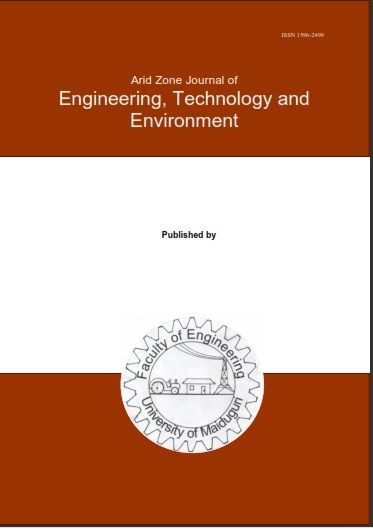Abstract
This study assessed noise pollution levels in and around Gwagwalada urban market and the likely effects on human health. Measurements of noise level were done using sound level meter (Smart Sensor Model AR854), at ten (10) selected points, whose coordinates were predetermined. The measurements were carried out at different times of the day (6-8am, 1-3pm and 5-7pm) for five (5) days, i.e. two traditional and three non-traditional market days. The data obtained were used to assess the variation in temporal and spatial noise level in and around the market, as well as the difference in noise level between the traditional and non-traditional market days, using ANOVA and t-test statistical tools. Results showed that highest noise level were generated in the evening hours (5-7pm) and the analysis of variance (ANOVA) in noise level at the different times showed significant variation at F(2) = 13.982, P≤0.05. Spatially, points PCC and AIS had the highest mean noise level of 84.64dB and 81.38dB, respectively and were higher than NESREA and WHO permissible limits. The ANOVA test for spatial noise level in the selected locations showed significant spatial variation with F(9) = 6.029, P≤0.05. Furthermore, paired t-test in the analysis of noise level between traditional (70.28 ± 10.15dB) and non-traditional (66.16 ± 8.28dB) market days, showed statistically significant difference at t(9)=2.766, P≤0.05. The high noise levels were due to sounds from power generators, use of sound amplifiers for product marketing among others. Noise pollution poses significant health risk and there is need to monitor and control noise level in and around the market, through the combined efforts of government, professionals and citizens. Additionally, there should be periodic assessment of the health status of traders in Gwagwalada market.

This work is licensed under a Creative Commons Attribution-NonCommercial-NoDerivatives 4.0 International License.
Copyright (c) 2025 ARID ZONE JOURNAL OF ENGINEERING, TECHNOLOGY AND ENVIRONMENT

